For some babies, teething causes minor discomfort, but for others, it can be much more painful. Your baby might be irritable, have swollen gums, sleeping problems, and difficulty eating. Believe me, it’s not fun to see your teething baby in pain!
That’s why I put together this list of teething hacks to help comfort your baby. With these tips, you can help to soothe your baby’s sore gums, and maybe even catch some longer stretches of sleep while you await that little tooth’s appearance.
When Do Babies Start Teething?
There’s a wide range of normal when it comes to teething. Most often, teething begins sometime between 4-7 months. The average time for the first tooth to appear is around their half birthday. And by the time your baby is three years old, they will have 20 baby teeth!
Most often, babies get their lower center teeth first, and then they get their upper center teeth. Baby teeth often emerge in sets of two but may even come in sets of four! My own babies were wildly different in terms of when and how their teeth appeared, so you never know what the case may be for your little one.
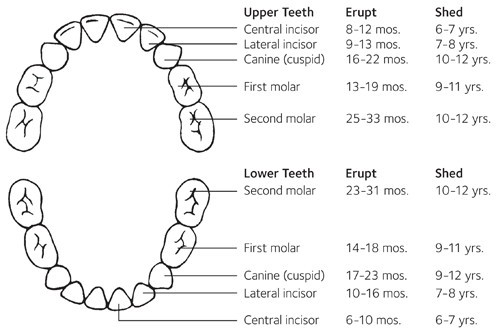
Teething Symptoms
It can be tricky to figure out what’s causing your baby’s fussiness or discomfort. In some cases, we are quick to blame teething when in reality baby is learning a new skill, experiencing a developmental leap, or having a growth spurt.
However, sometimes those new teeth are definitely the culprit! The most prominent signs of teething will occur 3-4 days before and after a tooth cuts through. Here are some signs of a teething baby:
- Visible red or swollen gums
- Visible white bumps on the gum line
- Excessive drooling
- Excessive biting on objects/toys
- Ear rubbing or pulling
- Rash, redness, or chapped skin around the mouth
- Crying
- Irritability
- Interrupted sleep and shorter naps
10 Genius Teething Hacks to Help Your Teething Baby
If you think your baby is dealing with teething, here are some go-to teething hacks to ease your baby’s teething pain!
1. Offer a variety of teething toys
Offering a variety of teething toys is an effective way to help your baby find some relief. When selecting teething toys, I always recommended choosing natural, non-toxic materials. This is important all the time, but especially for your teething baby who will constantly have this item in their mouth. Here’s what you want to avoid:
- Plastic. Teethers made of plastics can contain BPAs, phthalates, and other known endocrine disruptors and carcinogens. Even plastics labeled BPA-free may have other endocrine disruptors in the material.
- Liquid-Filled Teethers. Many teething toys that are filled with liquid for freezing have been recalled in recent years due to bursting. These may pose a safety risk, and I suggest avoiding them.
- Vinyl. Teethers made from PVC or vinyl should be avoided. They can contain chlorine, phthalates, and even heavy metals.
- Painted Teethers. Teethers that have paint or stain can chip off in your baby’s mouth. The safer alternative is beeswax polishes, or water and plant-based pigments.
So what materials are safest? Natural rubber, silicone, cotton, and natural wood teethers are the best, safest choices for your baby’s teething toys. Note that rubber and silicone teething toys can also be thrown in the freezer for some quick, cold relief. Some of my favorite teething toys are:
Chewbeads Teething Necklace
Buy on Amazon
These silicone beaded necklaces are beautiful for a mama to wear, and they distract your little one from pain. Babies often love to play and gnaw on these necklaces while nursing. It’s important to note that these are strictly made for you to wear, not your baby.
Chewbeads Teething Toy
Buy on Amazon
Made of natural wood and food-grade silicone, this is a great choice. The bumpy silicone ring and dangling wooden shapes are fun for your baby to manipulate and hold.
Silicone Cactus Teething Toys
Buy on Amazon
This teether provides a bit more tactile stimulation with its varied textures, so it’s great for both sensory exploration as well as soothing those sore gums. Made of silicone!
Maple Teether from Maple Landmark
Buy on Amazon
These soft sanded maple wood teethers are durable and totally natural, perfect for babies cutting new teeth.
Caaocho Natural Rubber Teether
Buy on Amazon
Made of 100% natural rubber, this one-piece teether is easy for little hands to hold. It’s shape and texture reach all the way back to those pesky emerging molars and give a massaging sensation when your baby bites down.
2. Let your baby chew on silicone feeders
Products known as feeders are an effective way to give your baby some relief from painful gums. For the best pain relief, fill these feeders with frozen fruits, veggies, or purees. You can even fill them with frozen breast milk chips or water for babies that aren’t yet eating solids! Silicone feeders are a favorite in my house because even after the frozen filling is gone, it still seems to feel good on the gums.
Boon Pulp Silicone Feeder
Buy on Amazon
3. Give your teething baby a frozen washcloth to chew on
This is a teething hack that every mama needs to know. Take a clean baby washcloth, wet it, ring it out, and freeze. Pull it out for a fun teething-relief activity your little one will love. For added appeal, try knotting the washcloth or fabric before wetting and freezing.
You can also try dipping the washcloth into brewed chamomile tea. The herb has calming, anti-inflammatory properties that may provide extra relief. I always suggest clearing the use of chamomile with your pediatrician before first use as some babies can have a chamomile allergy.
4. Try teething biscuits or crackers
There are a wide variety of teething biscuits, crackers, and wafers on the market. Though these are usually devoid of any nutritional benefits, teething biscuits are a good option for teething babies who are already eating solid foods. They are usually individually packaged, making them easy to throw in your diaper bag and use when you’re out and about.
Note that many teething crackers and biscuits are commercially produced and contain added sugars. Definitely take a look at the ingredients before you give them to your baby. Personally, I liked Happy Baby teething wafers because they have no added sugar.
Another option is to bake your own teething crackers and biscuits! This way you can choose a recipe with no added sugar. Many are sweetened naturally with fruit or fruit purees. It’s also a fun activity to do with an older sibling.
Happy Baby Teethers
5. Offer cold or frozen foods
It’s no secret that frozen and cold materials feel really good on a baby’s painful gums. With that in mind, there are a few ways you can use turn everyday foods into teething hacks to give your baby relief.
- Popsicles: Popsicle molds, especially ones designed for babies and toddlers, are a way to make a fun frozen treat for your little one. You can fill them with simple purees, smoothie mixtures, or even breastmilk. Look for a mold that’s made of silicone to reduce unnecessary exposure to toxins, like this one. This might get a little messy and is best for an older, teething baby or toddler.
- Offer frozen foods: Frozen banana, frozen cucumber strips or rings, frozen blueberries, or other fruit, frozen yogurt bites.
- Provide cold purees, smoothies, and yogurts: If your baby won’t eat regular meals, try offering cold homemade purees, homemade smoothies, cold applesauce, and yogurts.
6. Use an amber teething necklace
Baltic amber jewelry is a hot and much-debated topic in the parenting world. The idea behind using this jewelry to relieve pain is that the amber contains succinic acid. When the amber is against your little one’s warm body, this acid is released and relieves pain. Truth be told, there isn’t a whole lot of research supporting these claims, but there is a lot of anecdotal evidence and support from moms, so this still makes my list of teething hacks.
Note that the AAP as well as the FDA has released official warnings against the use of these types of necklaces due to reports of choking and strangulation. If you decide to use Baltic amber teething jewelry, be sure to do so with caution. These are NOT for chewing on.
Baltic Wonder Teething Necklace
Buy on Amazon
7. Massage your baby’s gums
Massaging the gums can provide relief for your teething baby. All you need is a clean finger or knuckle to gently rub and press on the sore spots along their gum line. This works well before or after a nursing session, or midway through a nursing session if your baby tries to bite your nipple, clothing, or body.
Alternatively, you can also massage your baby’s cheeks to provide teething pain relief. Simply use a little jojoba oil mixed with german chamomile hydrosol and gently rub your baby’s cheeks from the outside, focusing on the spots they’re teething. Don’t use anything containing clove oil because it’s way too strong for a baby.
8. Try the green onion teething hack
Want to try one of the best teething hacks you’ve probably never heard of? Allowing your baby to chew on a green onion may do the job, believe it or not. Green onions have analgesic properties, so try letting your baby gnaw on a cold scallion anytime their teething pain gets overwhelming. Be sure to supervise your little one! If you don’t have a green onion handy, a piece of celery may also help. Just be sure to remove the fibers.
9. Look to homeopathic remedies
Many babies respond well to homeopathic remedies like Camilia for teething. It is a clear and tasteless liquid that is generally safe for babies 1 month of age and older. This is also an interesting option because it may be helpful for when your baby is experiencing digestive issues related to teething. They’re also nice because they come in individual servings and are easy to pack in the diaper bag.
Another option is to try Hyland’s teething tablets. They were previously recommended against because they included Belladonna, but the company reformulated and the teething tablets now do not use this controversial ingredient. These teething tablets can be a big help for babies with sore gums and swelling.
10. Extra snuggles and attention
When your baby is teething, they may seem inconsolable at times. Their sleep may be disrupted and they may not want to eat or nurse as often as they normally do. Be sure to be extra attentive to your little one when they’re teething, offer extra snuggles, and do what your little one needs to get some relief. Maybe napping in the baby carrier or next to mama may be a good temporary measure while teething.
Help Your Baby Get Some Relief (And You, Some Sleep!)
The good news is that the discomfort associated with teething usually only lasts for a few days before and after a tooth emerges. The bad news is that your baby is going to get 20 teeth by their third birthday!
The sleep disruptions and fussiness can be frustrating and hard to watch, but with the tips in this article, you’ll be able to help your little one find some relief.
FAQs
Still have questions about teething remedies? Read on!
Do babies get a fever when teething?
It’s actually a myth that teething causes a fever but I swear my kids always had a low-grade fever when teething. Teething can only slightly raise the core body temperature. So, if your baby is running a fever higher than 100.5°F, it’s likely that your baby has an illness unrelated to teething.
Does teething pain get worse when lying down?
It’s not necessarily lying down that makes teething pains worse, but the activity associated with it—sleeping! When your baby is going to sleep, he has fewer distractions and will more acutely feel teething discomforts. Try turning on a white noise machine or offer him his pacifier. If he is really uncomfortable, try any of the remedies listed above. Sometimes a gum massage is all he needs before he drifts off to sleep.
Is it OK to give my teething baby Tylenol or numbing gel at night?
Tylenol can be harmful to babies, so it’s certainly not my first choice. My main reason for avoiding it at almost all costs is its ability to deplete the body of glutathione, an important antioxidant. For the body to be able to process acetaminophen, it uses high levels of glutathione, which puts undue stress on the liver and can actually lead to liver failure in babies and young children.
Numbing medication is often a gel-like substance advertised to rub on the gums to alleviate pain. I do not recommend their use because there have been multiple issues over the years. Some brands can contain benzocaine which can lead to a potentially fatal condition.
Do babies refuse to nurse or eat when teething?
Sometimes the suction motion involved in nursing or bottle-feeding can cause your babies’ gums to feel worse. Try massaging his gums and then see if he will nurse or take a bottle. Don’t give up! Try the methods listed above and it might just be all it takes for him to feel better and ready to drink/eat. Talk to your doctor if this becomes an issue.
What are the worst teeth to cut?
At the time, all those little teeth will feel like they are the worst teeth, but the molars are definitely the ones that cause the most pain. They are the largest teeth and take a while to fully come in. Typically, your baby will get his first set of molars around 12 months old and his second set of molars around age 2.
Are teething necklaces safe?
There are two types of teething necklaces. Those that parents wear and those that babies wear. The parent-worn teething necklace typically features large silicone beads that your baby might play with and chew on while being held or nursed. As with any product your baby puts into his mouth, I suggest you keep a watchful eye on him and check the product before and after each use. If you notice any weak spots or damage, do not use!
The baby-worn teething necklaces can be worn safely with close monitoring, but never let your baby sleep in the necklace. As mentioned above, the AAP as well as the FDA have released officially warnings against the use of these types of necklaces because of reports of choking and strangulation. Use with caution.
When do I start cleaning my baby’s teeth?
You can start brushing your baby’s teeth as soon as his first tooth emerges! Take a damp washcloth, a baby toothbrush, or a baby finger toothbrush moistened with water and gently clean the baby tooth/teeth. Pediatric dentists also recommend you gently brush your baby’s gums to prevent bacterial growth.
When should I take my baby to the dentist?
The American Academy of Pediatric Dentistry recommends you take your baby to the dentist after your little one’s first tooth appears, and no later than his first birthday. During his first dentist visit, the dentist will make sure your baby has proper dental hygiene and make sure there are no issues with dental decay.
Can I still use a pacifier once my baby has teeth?
Your baby can safely use a pacifier even when he has teeth. Pacifiers have a lot of benefits, including decreasing the risk of SIDS. Once your baby has teeth, I recommend examining the pacifier for breaks, tears, or weakness before each use, and replacing pacifiers as needed. Prolonged pacifier use (beyond age 1) can impact oral development, creating misalignment with teeth and jaw. I recommend talking to your pediatric dentist or pediatrician to determine what’s best for your child.









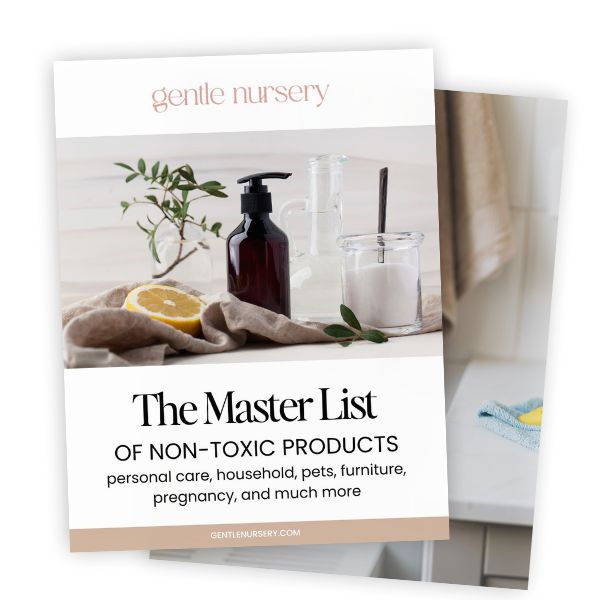
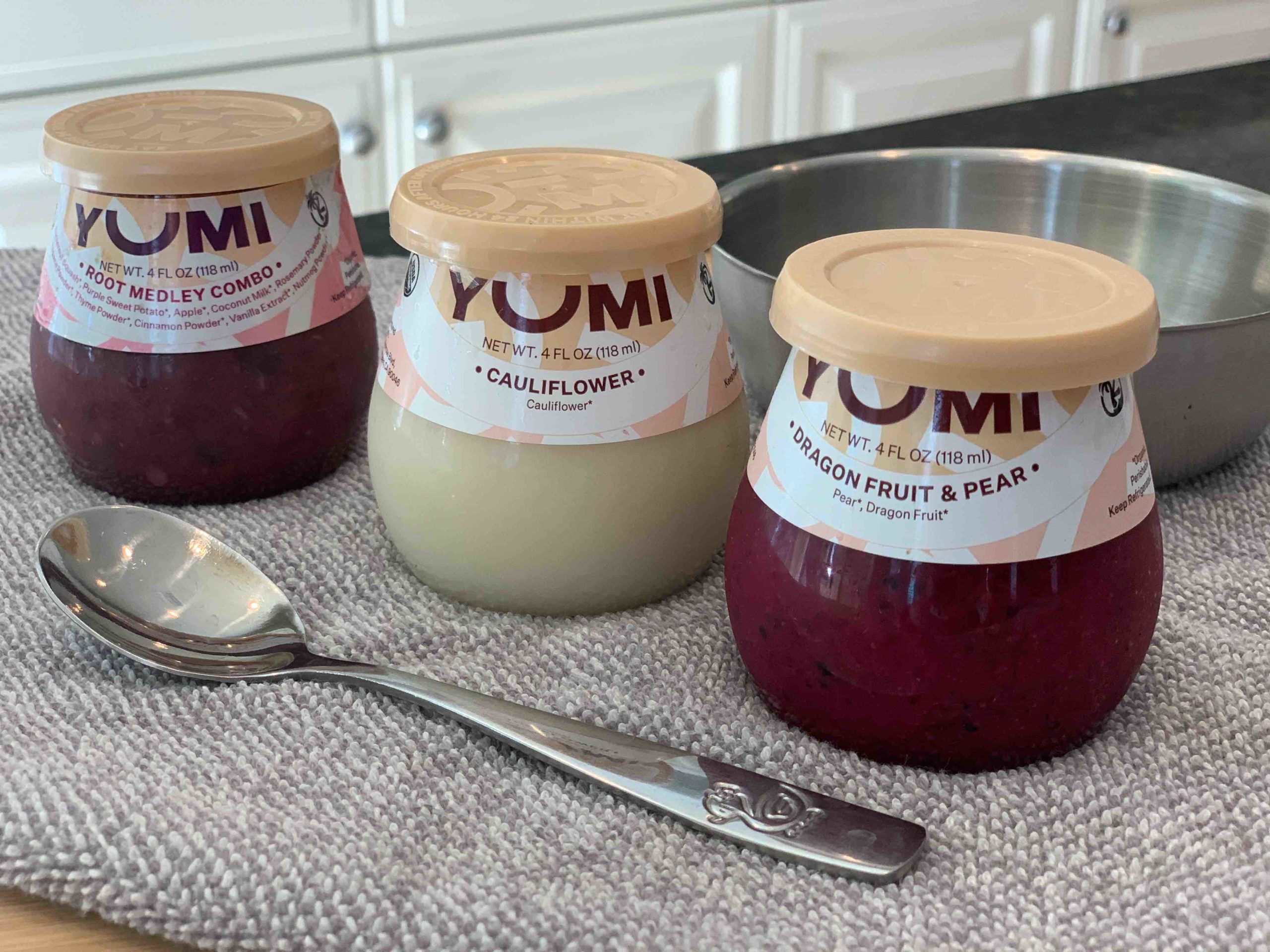



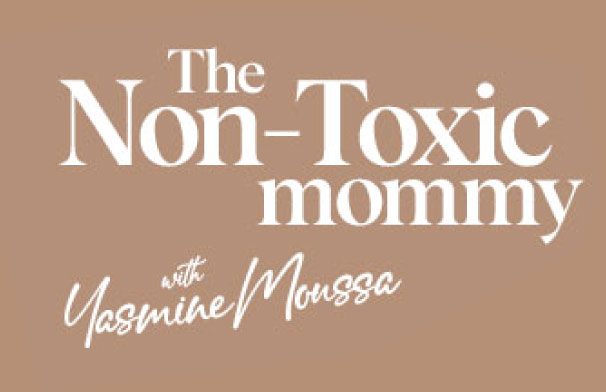


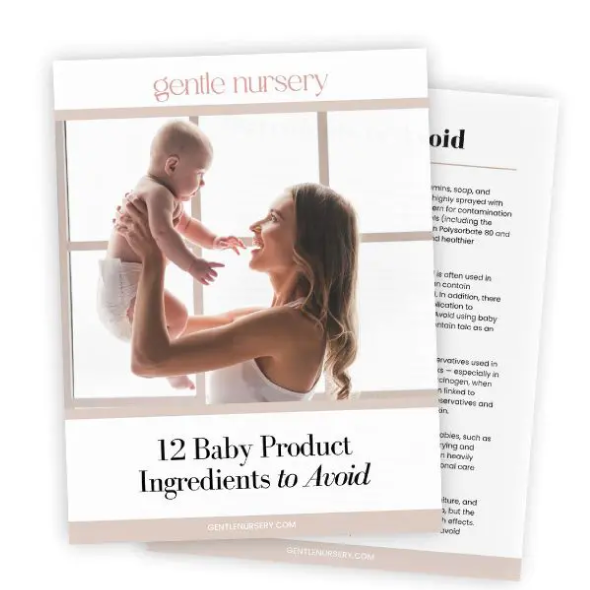
Leave a Reply